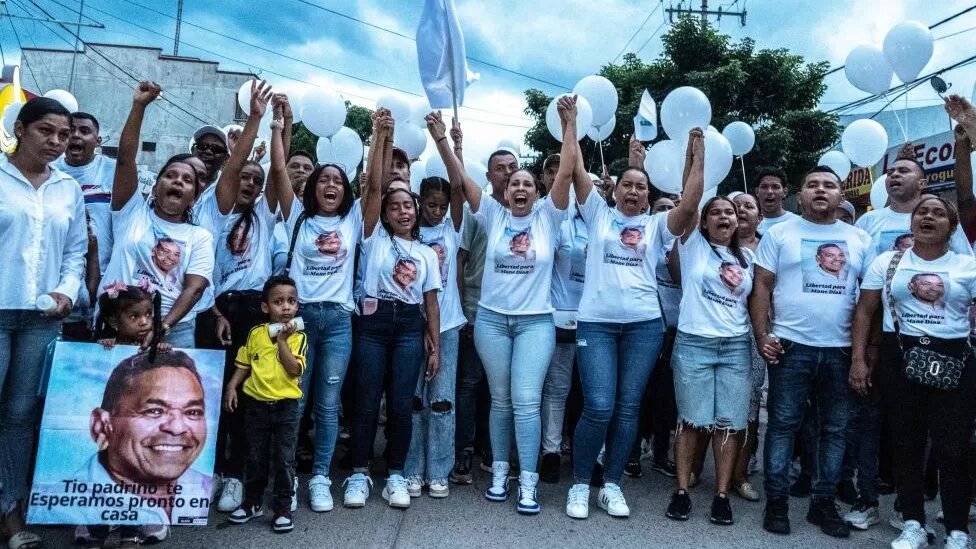Residents of the Colombian town of Barrancas have held a candle-lit march to demand the release of the father of Liverpool footballer Luis Díaz.
Luis Manuel Díaz was kidnapped at gunpoint along with his wife on Saturday.
The player’s mother was left behind in a car by the kidnappers as police closed in, but the gunmen dragged away his father.
Specialised police units are searching the area with sniffer dogs.
Shouting “freedom” and dressed in white T-shirts emblazoned with a photo of Luis Manuel Díaz, hundreds of people marched through Barrancas on Tuesday afternoon.
“I feel a pain deep in my soul,” resident Alis Amaya told local station Caracol news.
“It’s an injustice that someone from our town, a son of a local family should be suffering this pain and sadness,” she added.
Luis Manuel Díaz, also known as Mane, is a well-known and popular figure in Barrancas, where he trains young footballers.
CCTV footage broadcast by local media appears to show men on motorcycles following the couple’s car just before they were seized at a petrol station in Barrancas on Saturday.
The deputy head of the Colombian police, General Nicolás Zapata, told journalists that “when something like this happens, it’s not spontaneous, there is prior planning”.
The Colombian authorities have stepped up their search for Luis Manuel Díaz.
Barrancas is located in La Guajira province, in the extreme north of Colombia, an area where several guerrilla groups and armed gangs operate.
Police and soldiers are focusing their search on the Perijá mountains, a dense forest straddling the Colombia-Venezuela border.
Police Chief William Salamanca announced on Tuesday that two sniffer dogs with experience of searching for people in jungle areas had been flown to the area to join in the search.
Elite police units are using helicopters and planes equipped with heat-seeking cameras to fly over the forest.
They have also dropped leaflets with a photo of Luis Manuel Díaz and the offer of a 200m-peso reward ($50,000; £40,000) for information on Luis Manuel Díaz’s whereabouts.
On Monday, police said that they had identified a number of individuals “linked to the kidnapping” but did not say who they were.
They have, however, said that he appears to have been seized by a criminal gang rather than a guerrilla group.
There are a number of gangs which engage in smuggling, extortion and people-trafficking on both sides of the porous border.





